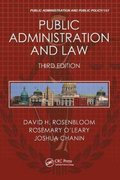please check the attachment to see the question.
4. [-/22 Points] DETAILS ASWSBE14 9.E.013. You may need to use the appropriate appendix table or technology to answer this question. Consider the following hypothesis test. Ho: p 50 H: # > 50 A sample of 60 is used and the population standard deviation is 8. Use the critical value approach to state your conclusion for each of the following sample results. Use a = 0.05. (Round your answers to two decimal places.) (a) x = 52.7 Find the value of the test statistic. State the critical values for the rejection rule. (If the test is one-tailed, enter NONE for the unused tail.) test statistic s test statistic 2 State your conclusion. O Do not reject H . There is insufficient evidence to conclude that # > 50. O Reject Ho. There is insufficient evidence to conclude that , > 50. O Reject Ho. There is sufficient evidence to conclude that # > 50. O Do not reject Ho. There is sufficient evidence to conclude that # > 50. (b) x = 51 Find the value of the test statistic. State the critical values for the rejection rule. (If the test is one-tailed, enter NONE for the unused tail.) test statistic s test statistic 2 State your conclusion. O Do not reject Ho. There is insufficient evidence to conclude that # > 50. O Reject Ho. There is insufficient evidence to conclude that , > 50. O Reject Ho. There is sufficient evidence to conclude that , > 50. Do not reject Ho. There is sufficient evidence to conclude that # > 50. (c) x = 51.8 Find the value of the test statistic. State the critical values for the rejection rule. (If the test is one-tailed, enter NONE for the unused tail.) test statistic s test statistic 2 State your conclusion. O Do not reject Ho. There is insufficient evidence to conclude that # > 50. O Reject Ho. There is insufficient evidence to conclude that , > 50. O Reject Ho. There is sufficient evidence to conclude that , > 50. O Do not reject H . There is sufficient evidence to conclude that , > 50.5. [-/12 Points] DETAILS ASWSBE14 9.E.023.MI. MY NO Consider the following hypothesis test. Ho: H S 12 Ha: H > 12 A sample of 25 provided a sample mean x = 14 and a sample standard deviation s = 4.31. (a) Compute the value of the test statistic. (Round your answer to three decimal places.) (b) Use the t distribution table to compute a range for the p-value. O p-value > 0.200 O 0.100 12. O Reject Ho. There is insufficient evidence to conclude that # > 12. O Do not reject Ho. There is sufficient evidence to conclude that # > 12. O Do not reject Ho. There is insufficient evidence to conclude that u > 12. (d) What is the rejection rule using the critical value? (If the test is one-tailed, enter NONE for the unused tail. Round your answer to three decimal places.) test statistic s test statistic 2 What is your conclusion? O Reject Ho. There is sufficient evidence to conclude that u > 12. O Reject Ho. There is insufficient evidence to conclude that M > 12. O Do not reject Ho. There is sufficient evidence to conclude that # > 12. O Do not reject Ho. There is insufficient evidence to conclude that u > 12








